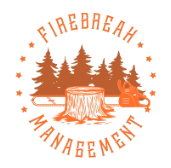Wildfires can pose a significant threat to homes, causing extensive damage and endangering lives. As a homeowner, it is crucial to take proactive measures to protect your property and ensure the safety of your loved ones. In this blog post, we will explore various measures that homeowners can take to safeguard their homes from wildfires.
1. Create a Defensible Space:
When it comes to protecting your home from wildfires, the first step you should take is creating a defensible space around your property. This involves removing any flammable materials and vegetation within a certain radius, essentially creating a buffer zone. To ensure maximum safety, it is recommended that you clear at least a 30-foot space surrounding your house, removing any dry grass, fallen leaves, and dead vegetation. Additionally, it’s important to trim any tree branches that overhang your roof and maintain a clean, well-irrigated landscape to reduce the risk of ignition. By taking these precautions, you can significantly increase the chances of keeping your home safe in the event of a wildfire.
2. Install Fire-Resistant Roofing:
In addition to creating a defensible space around your home, you may also want to consider upgrading your roofing materials to fire-resistant options. Metal, clay, or asphalt shingles treated with a fire-retardant coating can greatly reduce the risk of your home catching fire from flying embers or radiant heat. It’s important to inspect and maintain your roof regularly to ensure its integrity and effectiveness in protecting your home. By taking these extra precautions, you can further increase the safety of your home in the event of a wildfire.
3. Secure Exterior Walls and Windows:
Wildfires can generate intense radiant heat, which can easily break windows and ignite the interior of a home. Install dual-pane or tempered glass windows, as they are less likely to shatter under extreme heat. Additionally, consider covering windows with fire-resistant shutters or protective film to further reduce the risk of fire entering your home. Use non-combustible materials, such as stucco or brick, for exterior walls to minimize vulnerability.
4. Maintain a Clean and Clear Gutters:
In addition to creating a defensible space around your home and upgrading your roofing materials to fire-resistant options, it’s also important to regularly clean your gutters and remove any debris. This will prevent the accumulation of flammable materials that can easily ignite during a wildfire. Airborne embers can ignite dry debris in gutters, which can then lead to the potential spread of fire to your home. To reduce the risk of fire, it’s a good idea to install gutter guards to prevent debris buildup. By taking these extra precautions and maintaining your home, you can help protect your property from the devastating effects of wildfires.
5. Install Spark Arresters on Chimneys and Vents:
Embers carried by the wind can travel long distances and ignite flammable materials on your property. Install spark arresters on chimneys and vents to prevent embers from entering your home. Regularly inspect and clean these spark arresters to ensure their effectiveness.
6. Use Fire-Resistant Fencing and Landscaping:
If you have a fence surrounding your property, consider using fire-resistant materials such as metal, stone, or concrete. Avoid using wooden fences, as they can quickly catch fire and contribute to the spread of flames. When designing your landscape, choose fire-resistant plants that are low in flammability and maintain a well-irrigated and properly-maintained garden. Create a separation between trees and shrubs to reduce the risk of fire spreading.
7. Develop an Emergency Evacuation Plan:
Despite taking preventive measures, it is essential to have an emergency evacuation plan in place. Identify multiple evacuation routes and discuss them with your family members. Prepare an emergency kit with essential supplies, such as food, water, medications, and important documents. Stay informed about wildfire warnings and evacuation orders issued by local authorities.
Conclusion
Protecting your home from wildfires requires a proactive approach and diligent maintenance. By implementing the measures discussed in this blog post, you can significantly reduce the risk of your home being affected by wildfires. Remember, early preparation and planning are crucial in safeguarding your property and ensuring the safety of your loved ones. Stay vigilant and remain up-to-date with local wildfire prevention guidelines.
